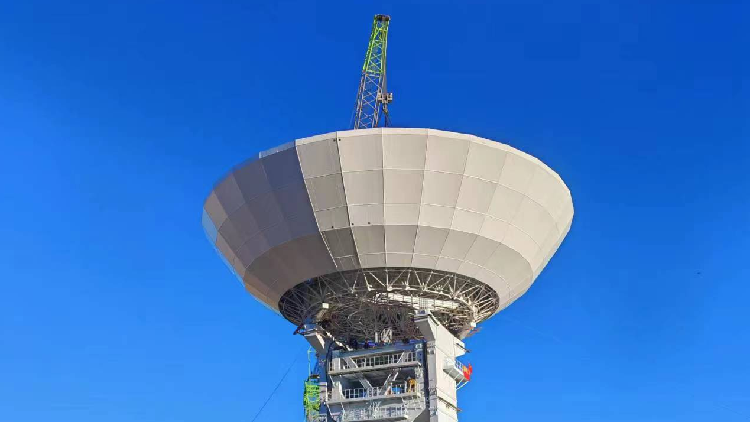China activates new radio telescopes for deep space exploration
China has deployed new radio telescopes to enhance its capabilities in deep space exploration. These advanced instruments are designed to facilitate the study of celestial phenomena and contribute to scientific research in astronomy. The deployment of these telescopes signifies a significant step forward for China's ambitions in space science and its quest to understand the universe more comprehensively.

Constructed by the Shanghai Astronomical Observatory of the Chinese Academy of Sciences, the telescopes are situated in the Changbai Mountain area of Jilin Province in northeast China and in Shigatse, in southwest China's Xizang Autonomous Region.
With this addition, China's Very-Long-Baseline Interferometry (VLBI) network now comprises one control center located in Shanghai and six stations, including two in Shanghai, along with one each in Urumqi, Kunming, Changbai Mountain, and Shigatse, as reported by SHAO.
VLBI is an advanced radio interferometry technology utilized for obtaining detailed radio images and precise positional data of cosmic bodies. It excels in high-precision positioning for deep space probes and stands out from conventional methods by allowing the combination of signals from multiple telescopes for joint processing. This approach effectively creates a "virtual telescope" as large as the maximum distance between the telescopes, as noted by scientists.
As a result of the installation of these two new telescopes, the longest baseline of China's VLBI network—referred to as the "effective aperture of the virtual telescope"—has been increased from about 3,200 kilometers to roughly 3,800 kilometers, according to Shen Zhiqiang, head of SHAO.
This enhancement means the observable sky area of the upgraded VLBI network in China could expand by 25 percent, while the angular resolution in the X-band may see an improvement of 18 percent, Shen explained.
China’s VLBI network has played a vital role in lunar exploration missions ranging from Chang'e-1 to Chang'e-6, along with the Mars mission Tianwen-1, by delivering high-precision measurements about the orbits and positions of various spacecraft.
The establishment of this VLBI network featuring six stations will facilitate simultaneous measurements and flexible tracking of multiple celestial targets, strengthening support for future lunar and deep-space exploration missions, said Shen.
During the launch ceremony for the telescopes, Ding Chibiao, vice president of CAS, highlighted the importance of major sci-tech infrastructure in fostering innovation and advocated for increased openness and sharing of scientific and technological resources.
Academician Ye Shuhua of CAS expressed that the two new telescopes will significantly contribute to upcoming lunar exploration efforts, as well as to deep space missions aimed at investigating asteroids, Mars, Jupiter, and other celestial entities.
The construction of the telescopes, which began in September 2023, faced substantial challenges. One telescope was erected at an altitude of 4,100 meters, while the other was sited in an area known for extreme cold, with winter temperatures plummeting below minus 20 degrees Celsius, as Shen noted.
Ultimately, these two telescopes are expected to bolster China’s capabilities in radio astronomy and advance leading-edge astronomical research in areas such as supermassive black holes, compact astrophysical objects displaying rapid variability, electromagnetic counterparts of gravitational waves, and galactic dynamics, Shen added.
Frederick R Cook for TROIB News
Discover more Science and Technology news updates in TROIB Sci-Tech












